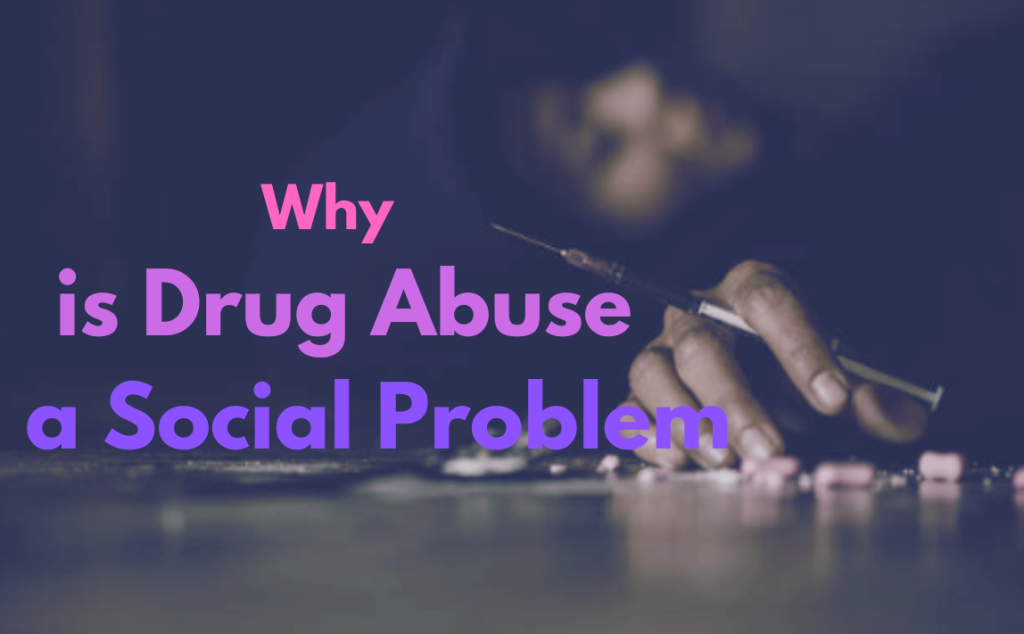
Drug abuse is a prevalent social problem that impacts individuals, families, and communities on various levels. It is not just a personal issue, but a public health concern that has widespread social consequences. The use and abuse of drugs can lead to various negative effects, including addiction, crime, and deteriorating physical and mental health. By recognizing drug abuse as a social problem, society can work together to address its root causes and develop effective prevention, treatment, and recovery strategies.
Key Takeaways
- Drug abuse is a public health concern with significant social consequences.
- The impact of drug abuse extends beyond individuals, affecting families and communities.
- A comprehensive approach to prevention and treatment requires recognizing societal factors contributing to drug abuse.
Why is drug abuse a social problem?
Drug abuse and addiction are significant contributors to social problems such as violence, crime, poverty, homelessness, and unemployment in both urban and rural areas.
One of the key aspects is the illicit drug market, where drug trafficking plays a major role. This leads to an increase in violence as rival groups compete for control, causing harm and fear in communities. The criminal justice system becomes overburdened due to drug-related incarcerations, with many individuals charged with drug possession, distribution, and other offenses. This further exacerbates issues like overcrowding in jails and high rates of recidivism.
Another social issue is the increasing number of people affected by substance use disorders (SUDs), particularly with the opioid crisis leading to a surge in overdoses. Health care systems struggle to meet the demand for treatment and prevention, which affects all the society members. Moreover, drug abuse is not limited to illegal drugs – alcohol and tobacco also contribute significantly to the burden of diseases, injuries, and health care costs.
Young individuals, particularly adolescents, are at a higher risk of experimenting with drugs, due to peer pressure or as an escape from stress. This engagement in drug culture can lead to negative long-term consequences. Additionally, families of those suffering from addiction struggle with the emotional toll, increased likelihood of abuse and neglect, as well as financial hardships. This often results in family separations and dissolution, creating a vicious cycle among generations.
The relationship between drug abuse, poverty, and homelessness is complex and multifaceted. Lack of stable housing, education, and employment opportunities contribute to addiction. Conversely, addiction can lead to loss of employment, housing, and social status, all of which contribute to poverty and homelessness. Furthermore, stigma and social inequality attached to addiction make it harder for individuals to seek help, perpetuating the problem.
The Impact of Drug Abuse on Society
Public Health Concerns
Drug abuse poses significant public health concerns, affecting not only users but also their families and communities. Substance use disorders involving illicit drugs such as opioids, heroin, and cocaine, as well as legal substances like alcohol and tobacco, can lead to severe health complications. In both urban and rural areas, drug abuse contributes to increased rates of overdoses and the spread of infectious diseases through unsafe injection practices. The opioid epidemic, for example, has led to a dramatic rise in overdose deaths across the United States.
Socioeconomic Consequences
The socioeconomic consequences of drug abuse are far-reaching, impacting not only individuals but also entire communities. Drug trafficking and the associated violence put a significant strain on the criminal justice system. Furthermore, addiction can cause financial distress, unemployment, and homelessness for those struggling with substance use disorders, which in turn perpetuates cycles of poverty. The economic cost of drug abuse is immense, estimated at nearly $215 billion, accounting for lost productivity, overburdened healthcare systems, and the expenses of incarceration.
Cultural and Social Dynamics
Drug abuse affects the cultural and social dynamics of communities in various ways. The stigma associated with addiction and the criminalization of drug use can create and exacerbate social inequality, pushing those struggling with addiction into the margins of society. This marginalization may result in vulnerable populations, such as youth and adolescents, being more susceptible to ongoing drug abuse. Families are often disrupted when a member suffers from addiction, leading to negative repercussions for both the individual and their loved ones.
Drug culture and the normalization of drug use within certain groups can also perpetuate substance abuse and hinder effective prevention and treatment efforts. An ineffective drug policy that focuses on punitive measures rather than addressing the root causes can exacerbate these issues, leading to a widespread social problem that requires a comprehensive and multi-faceted approach to address underlying issues such as poverty, homelessness, and unemployment.
In conclusion, drug abuse is a complex social problem with far-reaching implications for public health, socioeconomic stability, and cultural and social dynamics. To effectively address this issue, a holistic approach targeting various aspects of society is required, including comprehensive drug policies, prevention, treatment, and support for those struggling with addiction.
Prevention, Treatment, and Recovery

Preventive Measures and Programs
Preventive measures and programs play a crucial role in combating drug abuse, particularly considering that some children might start using drugs by the age of 12 or 13. These prevention programs seek to elevate protective factors and eliminate or reduce risk factors associated with drug use. They cater to different age groups and can be used in various settings, such as schools or homes [link]
Concentrating on the community and education aspects of prevention, implementing programs in schools, churches, local organizations, and workplaces is crucial. Some effective strategies might include:
- Education on the dangers of substance abuse
- Providing coping strategies for managing stress and peer pressure
- Encouraging positive social connections
- Developing youth mentorship programs
Treatment Modalities
When it comes to treatment and recovery from substance use disorders, a variety of modalities exist. The selection of treatment often depends on the specific circumstances of the individual suffering from addiction. Some of the most common treatment types include:
- Inpatient rehabilitation
- Outpatient treatment
- Counseling and therapy (individual, group, or family)
- Twelve-step programs, such as Alcoholics Anonymous or Narcotics Anonymous
- Medication-assisted treatment, especially for opioid addiction
Challenges to Effective Treatment
Several challenges impede the effectiveness of addiction treatment:
- Stigma: The social stigma surrounding addiction can discourage individuals from seeking help and impede access to care.
- Mental health: Co-occurring mental disorders can exacerbate substance abuse and complicate treatment.
- Access to treatment: Facilities might be limited in certain areas, especially in rural communities, leading to longer waiting times for those who need support.
- Insurance: Not all insurance providers cover the full spectrum of treatment options, creating financial barriers for individuals seeking help.
Society must address these barriers in order to ensure that those affected by substance abuse receive the necessary care and support.
Note – If you have any concern or question, Please Contact Us






